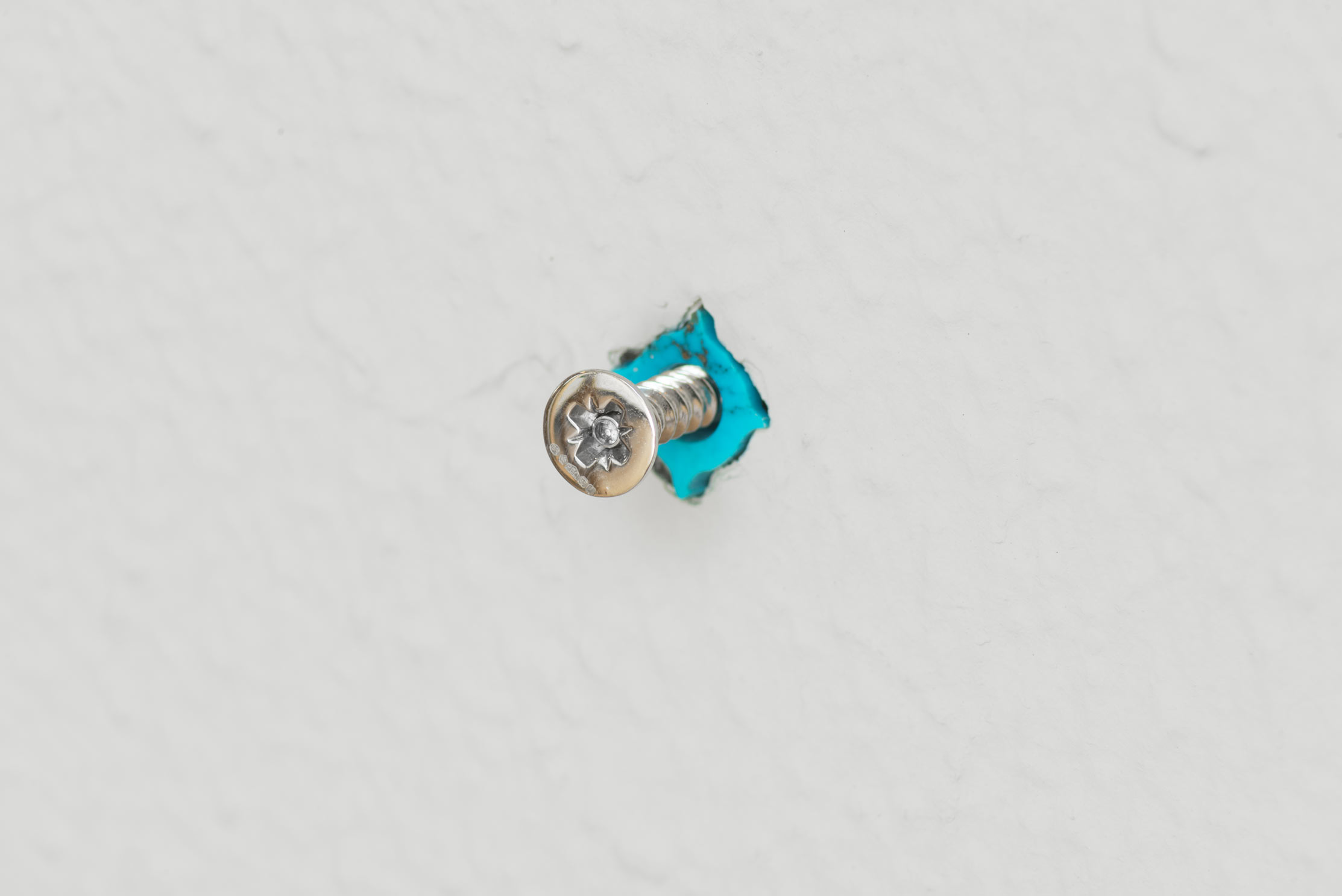Interview
Susan Collis: Old Rope
Nu Magazine
An interview with Susan Collis conducted on the occasion of her inclusion in the group show at Pippy Houldsworth Gallery, Old Rope, curated by Polly Morgan and featuring new work from Tracey Emin, Martin Creed, Boo Saville, Sue Webster, Susan Collis and Amba Sayal-Bennett (11 July — 30 August 2014).
The interview focused on Collis’ combined approach of conceptual art’s minimalist aesthetics with tenuous labour and devotion in order to create works of art abounding in detail, precision, time and love. Banal objects such as dust sheets, overalls, step ladders, work tables and screws are made purposely invisible, relying on the viewer to look a little bit closer as to reveal themselves in all their intricate majesty.

Extract —
“Collis’ art career is not spark until she was in her 30s after studying literature at university and pursuing a career in publishing for around 10 years. It was upon meeting her husband—a fellow artist—that inspired Susan to take up a creative life of her own that wasn’t devoted purely to writing; an evening class followed by an art access course, followed by a Foundation at Chelsea College of Arts, found Collis snowballing into a world of art and a Master’s Degree from the Royal College. Collis traces the evolution of her practice to the “schizophrenic education” she received whilst studying at Chelsea College of Arts and the Royal College. Her work is an amalgamation of the conceptual packaging and minimalist aesthetic of Chelsea, and the laborious and monumental ethic of the Royal College and its facilities, namely the foundry. The product is an art-object invested with a tenet of the hand-made but clothed in a veil of the conceptual.
Charlie Mills: What made you first start using objects such as dust sheets, overalls and stepladders?
Susan Collis: I think to start off with because I wanted to make these things which were to be invisible but very worked, I was just looking around the college for things that you would walk past and things you wouldn’t give a second glace to. So to see a pair of overalls hanging on the wall—and the way I displayed them at our summer show was just hanging up next to a sink, stood out for me. Lots of people didn’t notice they were even there. I thought it was an interesting idea to recreate marks with stitch but I never thought it would beat people’s eye. I wanted to use items that looked at home in the space—so the next item I did was the white pair of overalls because it references the people who have to come in and tidy and paint the space before a new exhibition. Funnily enough the guy who bought those was a painter and decorator. His name was Carl Marks. So I got this phone call saying Carl Marks wants to buy you art. I thought that was really funny but I don’t think he got the joke.
CM: You talked about displaying your work at your degree show—would you like your pieces, once bought, to be displayed as you would?
SC: Yeah definitely, because otherwise people will put a spotlight on them —and that has happened—I was in a show in Ireland and it was up on a raised platform with a spotlight on it. I definitely think I need to be quite clear with people about the fact I want my work displayed quite casually—always with the possibility and courting the idea that people miss it – but also that they don’t. It’s difficult because I rely quite heavily on the materials list with my work—so when people see ‘Susan Collis—platinum, pearl, diamond etc.’ then they have to look for it, but I wouldn’t want a big tag right next to it or anything like that.”
